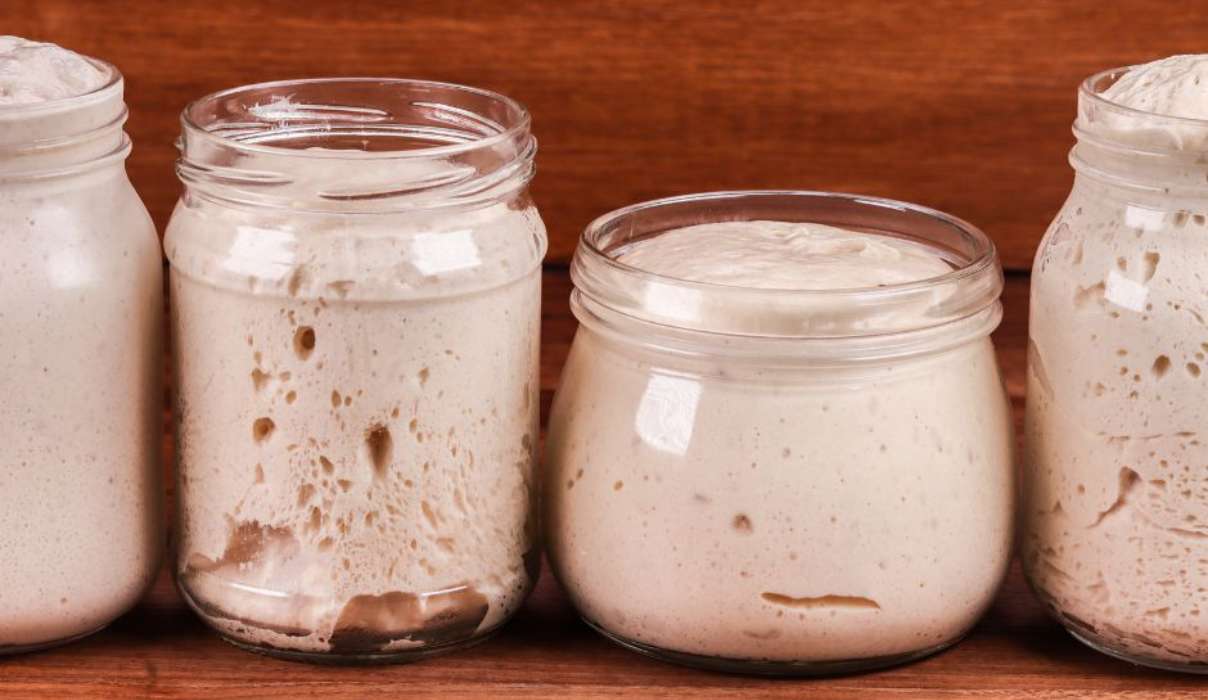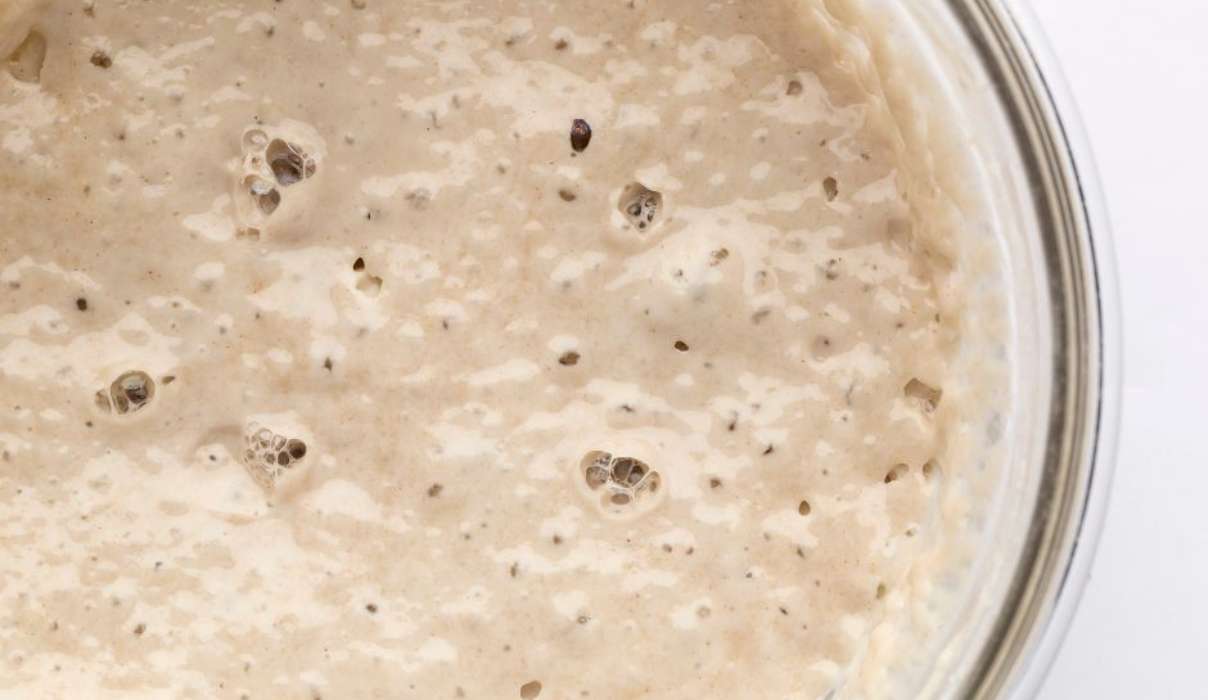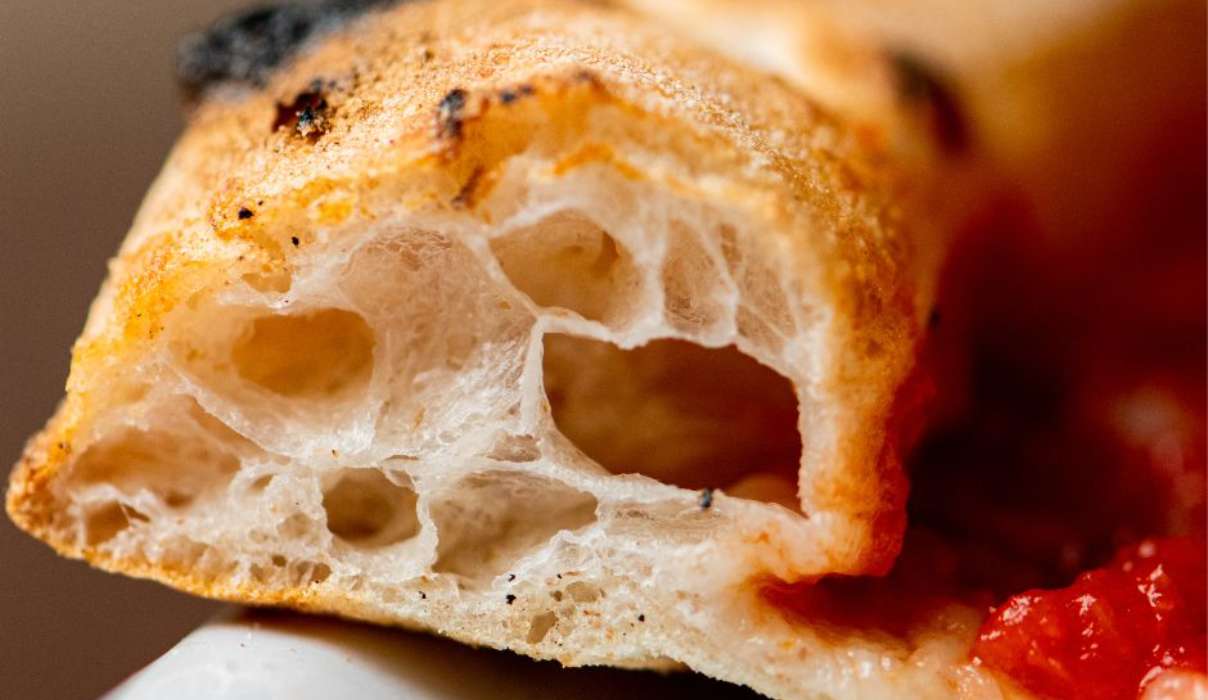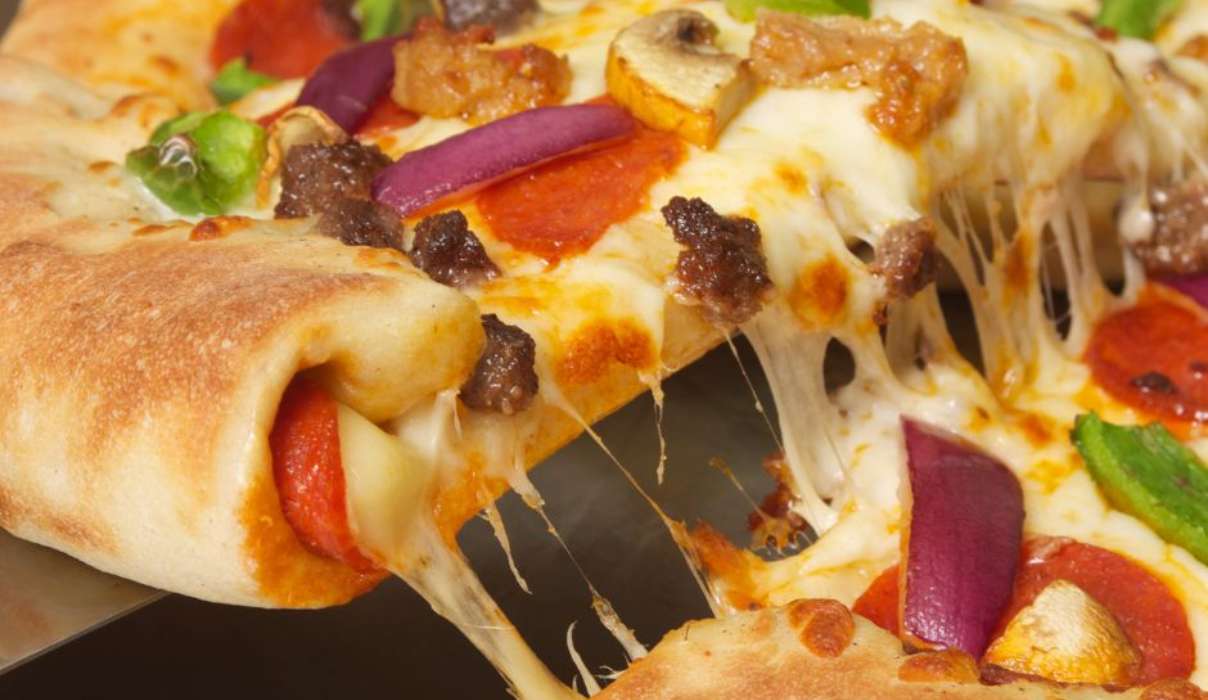Imagine the quintessential sizzle of bubbling cheese, the aromatic punch of fresh tomato sauce, and the satisfying crunch of the first bite into a perfectly blistered pizza crust. At the heart of this culinary symphony lies the unsung hero, pizza dough.
But not all pizza dough is created equal, and for those embarking on the journey of dough perfection, terms like "Biga" and "Poolish" can make the difference between culinary mediocrity and the sublime.
To the DIY-at-home pizza artist, understanding the nuances of these pre-fermentation techniques is akin to wielding a magic wand that can conjure a variety of flavors and textures within your crust.
In the great Biga vs Poolish debate, which technique is the doughy Dumbledore to your pizza's Potter? Let's dive in and knead out the main differences.
What is a Pre-ferment?
Before we start making the dough, let's understand why pre-fermentation is important. Pre-fermentation is like magic for baking. It turns basic flour and water into flavorful and textured doughs.
Sourdough starter is a great example of a pre-ferment. However, a sourdough starter requires ongoing care and maintenance to keep it active and healthy.
Biga and Poolish are two types of pre-ferments that are made fresh for each baking session. They are like the opening acts before the main event—the pizza dough. They set the stage for creating delicious pizza by giving the dough extra flavor and texture.

Understanding Biga and Poolish
What is Biga?
Biga is a pre-ferment used in Italian bread-making, particularly for rustic breads like ciabatta or focaccia. It's essentially a simple mixture of flour, water, and yeast that is allowed to ferment for a period of time before being incorporated into the final dough.
Here's how it works:
-
Ingredients: Biga typically consists of flour, water, and a small amount of yeast. The ratios can vary depending on the recipe, but it's usually a higher hydration mixture, meaning there's more water relative to flour compared to the final dough.
-
Mixing: To make Biga, you simply mix the flour, water, and yeast together until it forms a shaggy dough. It's then left to ferment at room temperature for a specified amount of time, usually anywhere from 12 to 24 hours, although some recipes might call for longer or shorter fermentation times.
-
Fermentation: During this fermentation period, the yeast in the Biga begins to feed on the sugars present in the flour, producing carbon dioxide gas and alcohol. This process helps to develop flavor in the Biga and also contributes to the rise and texture of the final bread.
-
Incorporation into final dough: Once the Biga has fermented sufficiently, it's added to the remaining ingredients in the recipe, such as more flour, water, salt, and sometimes additional yeast. This mixture is then kneaded together to form the final dough, which is allowed to rise before baking.
Biga Benefits
The Biga method is beloved for its ability to develop the dough’s gluten structure, leading to a chewy, textured crust. Its long fermentation time also imparts a depth of flavor and a subtle sourness that can elevate the taste of the final product. Think earthy, complex notes that sing on the palate.
Using Biga in pizza-making can enhance the flavor, texture, and overall quality of the crust by adding complexity through the fermentation process. It's a technique that requires a bit of planning ahead due to the fermentation time involved, but it's relatively simple and can elevate your homemade pizza to a whole new level.
-
Enhanced Flavor: Biga typically undergoes a longer fermentation period compared to Poolish, which allows for more complex flavors to develop. The extended fermentation time allows the yeast to produce a wider range of flavor compounds, resulting in a pizza crust with a rich, deep flavor profile.
-
Improved Texture: The use of Biga in pizza can lead to a crust with a slightly chewier texture and a more open crumb structure. The long fermentation time helps to develop gluten strands, resulting in a better structure and a more airy interior.
-
Extended Shelf Life: Because of its longer fermentation period, pizza made with Biga tends to have a longer shelf life compared to pizza made with Poolish. The fermentation process helps to improve the keeping quality of the pizza, keeping it fresher for longer.
What is Poolish?
Poolish is another type of pre-ferment used in bread-making, particularly in French bread recipes like baguettes. Similar to Biga, it's a mixture of flour, water, and yeast that is allowed to ferment before being incorporated into the final dough.
Here's a breakdown:
-
Ingredients: Poolish typically consists of equal parts flour and water, along with a small amount of yeast. The ratio of flour to water can vary depending on the recipe, but it's generally a high hydration mixture, meaning there's more water relative to flour compared to the final dough.
-
Mixing: To make Poolish, you simply mix the flour, water, and yeast together until it forms a loose, wet dough. It's then left to ferment at room temperature for a certain period of time, usually anywhere from 8 to 16 hours, although some dough recipes might call for longer or shorter fermentation times.
-
Fermentation: During the fermentation period, the yeast in the Poolish begins to feed on the sugars present in the flour, producing carbon dioxide gas and alcohol. This process helps to develop flavor in the Poolish and also contributes to the rise and texture of the pizza crust.
-
Incorporation into final dough: Once the Poolish has fermented sufficiently, it's added to the remaining ingredients in the dough recipe, such as more flour, water, salt, and sometimes additional yeast. This mixture is then kneaded together to form the final dough, which is allowed to rise before baking.
Using Poolish in pizza recipes can enhance the flavor, texture, and overall quality of your crust by adding depth of flavor and a more open crumb structure. It's a technique that requires some advance planning due to the fermentation time involved, but it's relatively straightforward and can take your authentic pizza to a higher level of artisanal quality.
Poolish Perks
Poolish is prized for its contribution to dough extensibility, giving the final crust a light, airy texture. Its short fermentation window ensures a rapid rise in the oven, perfect for those who seek a quick turnaround without compromising on flavor. The result is a softer, more elastic crust that marries well with a spectrum of pizza styles.
-
Quick Fermentation: Poolish typically ferments for a shorter period of time compared to Biga, usually around 8 to 16 hours. This shorter fermentation time makes Poolish a great option for bakers who want to make bread or pizza with a pre-ferment but don't have as much time to spare.
-
Lighter Flavor Profile: Because of its shorter fermentation time, Poolish tends to produce crust with a milder, sweeter flavor compared to Biga. This can be desirable for pizzas where you want the flavor of the flour to shine through without being overshadowed by more intense fermentation flavors.
-
Soft, Tender Crumb: Bread and pizza made with Poolish often has a softer, more tender crumb compared to those made with Biga. The shorter fermentation time allows for less gluten development, resulting in a more delicate texture.

Biga vs Poolish: A Doughy Duel
Both Biga and Poolish are pre-ferments used in bread and pizza recipes, and while they share some similarities, they also have distinct characteristics and benefits.The Biga and Poolish techniques may appear almost identical, with their flour, water, and yeast trinity, yet subtle differences grow into pronounced effects on your pizza dough.
Ingredient and Preparation Variance
While both Biga and Poolish serve similar purposes as pre-ferments, there are some differences in their ingredients and preparation methods.
Here's a comparison of the ingredients and preparation for Biga versus Poolish:
Ingredients:
-
Biga:
- Typically consists of flour, water, and yeast.
- The ratio of flour to water can vary, but Biga is generally a lower hydration level, meaning it has less water relative to flour compared to Poolish.
- Some recipes may call for the use of a small amount of salt in the Biga, but this is less common.
-
Poolish:
- Also consists of flour, water, and yeast.
- The ratio of flour to water in Poolish is typically 1:1 or close to it, making it a higher hydration pre-ferment compared to Biga.
- Like Biga, Poolish recipes generally do not include salt in the pre-ferment.
Preparation Variations:
-
Biga:
- Biga is traditionally associated with Italian bread-making, particularly rustic breads like ciabatta or focaccia.
- It is typically mixed together into a shaggy dough and left to ferment at room temperature for a longer period of time, usually around 12 to 24 hours or even longer.
- The longer fermentation time of Biga allows for more complex flavors to develop, resulting in a bread with a rich, deep flavor profile and chewy texture.
-
Poolish:
- Poolish is commonly used in French bread recipes, such as baguettes.
- It is mixed into a loose, wet dough and fermented for a shorter period of time compared to Biga, usually around 8 to 16 hours.
- The shorter fermentation time of Poolish produces a bread with a milder, sweeter flavor and a softer, more tender crumb compared to Biga.
In summary, while both Biga and Poolish consist of similar basic ingredients (flour, water, and yeast), they differ in their hydration levels, fermentation times, and the types of breads they are traditionally used for. Biga tends to result in breads with more complex flavors and chewier textures, while Poolish produces breads with milder flavors and softer crumbs. Both pre-ferments offer bakers flexibility in creating homemade bread with unique characteristics.
Flavor and Textural Development
The flavor and textural development of bread made with Biga versus Poolish can vary significantly due to differences in fermentation time, hydration levels, and the resulting biochemical processes. Here's a comparison of how Biga and Poolish contribute to flavor and texture:
Flavor Development:
-
Biga:
- Biga typically undergoes a longer fermentation period, ranging from 12 to 24 hours or even longer. During this time, the yeast in the Biga consumes the sugars in the flour, producing carbon dioxide, alcohol, and a variety of flavor compounds through fermentation.
- The extended fermentation allows for more complex flavor development, resulting in a bread with a rich, deep flavor profile. Biga imparts a slightly tangy and nuanced taste to the bread, often described as more "earthy" or "nutty."
- The flavors produced during the long fermentation process can include subtle hints of sourness, sweetness, and complexity, contributing to a well-rounded flavor in the final bread.
-
Poolish:
- Poolish undergoes a shorter fermentation period compared to Biga, typically around 8 to 16 hours. The shorter fermentation time means that there is less time for flavor development compared to Biga.
- Bread made with Poolish tends to have a milder, sweeter flavor profile compared to Biga. The shorter fermentation allows for fewer fermentation byproducts to develop, resulting in a bread with a cleaner, more straightforward taste.
- While Poolish imparts a pleasant flavor to the bread, it is generally less complex and nuanced compared to bread made with Biga. However, Poolish can still contribute to a flavorful and enjoyable loaf, particularly in breads where a lighter taste is desired.
Textural Development:
-
Biga:
- The longer fermentation time of Biga allows for more gluten development in the dough. As a result, bread made with Biga tends to have a chewier texture with a more open crumb structure.
- The gluten strands formed during fermentation contribute to the bread's structure, giving it a satisfyingly hearty and substantial texture. Biga helps create breads with a rustic, artisanal feel, characterized by a crusty exterior and a moist, chewy interior.
-
Poolish:
- Bread made with Poolish typically has a softer, more tender crumb compared to bread made with Biga. The shorter fermentation time in Poolish results in less gluten development, leading to a lighter and more delicate texture.
- Poolish contributes to a bread with a softer mouthfeel and a finer crumb structure. This makes Poolish ideal for producing breads with a more delicate and refined texture, such as French baguettes or sandwich loaves.
While both Biga and Poolish contribute to flavor and textural development in pizza-making, they offer distinct characteristics. Biga pizza dough has complex flavors and chewy textures, while Poolish pizza dough has milder flavors and softer, more tender crust. The choice between Biga and Poolish depends on the desired flavor profile, texture, and style of bread being made.
Prepping the Preferments
The distinguishing factor here is the rate of fermentation and rise. Biga, being stiffer and benefiting from a longer fermentation, provides a slower, more controlled rise, perfect for thicker, chewier crusts or those wanting to explore longer baking times. Poolish, with its higher hydration and quicker fermentation profile, is ideal for thinner crispier pizzas or those lacking patience (which is okay, we all do sometimes).
Here's how to work the magic of Biga and Poolish into your home pizza-making routine.
Biga Recipe
Ingredients:
- 1 cup (120g) bread flour
- 1/2 cup (118g) room temperature water
- 1/8 teaspoon (equal to a pinch) instant yeast
Directions:
- Mix the ingredients in a bowl until you get a rough, shaggy dough.
- Cover and let it ferment at room temperature for 12 to 48 hours.
Poolish Recipe
Ingredients:
- 1 cup (120g) bread flour
- 1 cup (236g) room temperature water
- 1/8 teaspoon (equal to a pinch) instant yeast
Directions:
- Mix the ingredients in a bowl until just combined.
- Cover and let it ferment at room temperature for 8 to 16 hours.
How Much Pre-Ferment to Put in Your Pizza Dough Recipe?
The amount of Biga dough used in a pizza dough recipe can vary depending on the specific recipe and the desired characteristics of the final pizza crust. However, as a general guideline, Biga typically makes up a portion of the total flour in the pizza dough recipe, usually around 20% to 30%.
For example, if you're making a pizza dough recipe that calls for a total of 500 grams of flour, you might use around 100 to 150 grams of Biga.
When using a Poolish dough in a pizza dough recipe, the amount of Poolish used can vary depending on the specific recipe and the desired characteristics of the final pizza crust. However, as a general guideline, Poolish typically makes up a portion of the total flour and water in the pizza dough recipe, usually around 20% to 30% of the total flour weight.
For example, if you're making a pizza dough recipe that calls for a total of 500 grams of flour and 300 grams of water, you might use around 100 to 150 grams of flour and 100 to 150 grams of water to make the Poolish.
Keep in mind that these are just rough estimates, and the actual amount of Biga or Poolish used may vary based on factors such as the amount of water in the type of preferment, the type of yeast, the desired flavor and texture of the pizza crust, and personal preference.
Which Technique to Choose?
Deciding between Biga and Poolish is a matter of taste, patience, and the type of pizza you're striving to craft. When it comes to pizza dough, both Biga and Poolish pre-ferments can be used to enhance flavor, texture, and overall quality. However, the choice between Biga and Poolish can influence the characteristics of the pizza dough.
Here's how each pre-ferment can be used effectively with different types of pizza dough:
Pizza Dough with Biga Pre-ferment:
-
Neapolitan Pizza Dough:
- Neapolitan pizza dough, which is characterized by its thin crust and slightly chewy texture, can benefit from the use of a Biga pre-ferment.
- Biga adds complexity to the flavor profile of the dough, resulting in a more nuanced and satisfying taste.
- The extended fermentation of Biga helps develop gluten strands, contributing to the dough's elasticity and chewiness, which are desirable qualities in Neapolitan-style pizza.
-
Rustic or Artisanal Pizza Dough:
- Pizza dough intended for rustic or artisanal pizzas, such as those with thicker crusts or more substantial toppings, can also benefit from a Biga pre-ferment.
- Biga enhances the flavor of the dough, giving it a deeper, more robust taste that complements hearty toppings like roasted vegetables, cured meats, or aged cheeses.
- The chewy texture achieved through Biga fermentation adds to the overall satisfaction of biting into a slice of rustic or artisanal pizza.

Pizza Dough with Poolish Pre-ferment:
-
New York Style Pizza Dough:
- New York style pizza dough, known for its thin, crisp crust and foldable slices, can be enhanced by using a Poolish pre-ferment.
- Poolish contributes to a lighter, airier texture in the dough, resulting in a crust that is both tender and slightly chewy.
- The mild, sweet flavor profile of Poolish complements classic New York style pizza toppings such as tomato sauce, mozzarella cheese, and pepperoni.
-
Thin Crust or Cracker-style Pizza Dough:
- Pizza dough intended for thin crust or cracker-style pizzas, which are characterized by their crisp, thin bases, can benefit from the use of a Poolish pre-ferment.
- Poolish fermentation produces a dough with a delicate, crispy texture that is ideal for thin crust pizzas.
- The subtle flavor of Poolish enhances the overall eating experience without overwhelming the palate, allowing the flavors of the toppings to shine through.

In summary, Biga pre-ferment is well-suited for pizza doughs that require a chewy, rustic texture and complex flavor profile, such as Neapolitan or artisanal pizzas. On the other hand, Poolish pre-ferment works best with pizza doughs that benefit from a lighter, airier texture and a more delicate flavor, such as New York style or thin crust pizzas. Ultimately, the choice between Biga and Poolish depends on the desired characteristics of the pizza dough and the style of pizza being prepared.
Pro Tips for At-Home Pizzaiolos
Regardless of your preferment of choice, these tips will set you on the path to pizza triumph.
General Guidance
- Keep your prefermented dough at room temperature, ideally 70°F (21°C). This environment encourages the growth of wild yeast and bacteria that contribute to flavor development.
- Use a kitchen scale to measure your ingredients for precision and consistency. Every gram and ounce counts in the world of baking.
- Do not forget to adjust the final dough recipe to take into account the flour and water used in the preferment. This will prevent the dough from becoming too dry or too wet.
Troubleshooting the Tough Dough
- If your dough feels too dense or tight, consider increasing the hydration slightly. A wetter dough can lead to a lighter texture, especially if you encounter any kneading resistance.
- If the dough feels too slack and difficult to shape, reduce the water content in your final dough or increase the flour-giving more structure and making it easier to manage.
- Adjusting fermentation times can also affect the final outcome. A shorter fermentation results in a less sour and less aerated dough, and vice versa.
Crafting the Perfect Pizza
The choice between Biga and Poolish signifies a quantum leap in your evolution from pizza lover to pizza maker. As with all culinary journeys, personal preference is the guiding light. Experiment, taste, and listen to the crust as it tells you its tale in every bite.
In the eternal Biga vs Poolish debate, there's no need to pledge allegiance to one or the other. Blend them, tweak the hydration, vary the time, and observe the metamorphosis. Craft each dough as an express that showcases your vision of perfection.
Embrace the floury adventure, and may the crust be ever in your favor.




